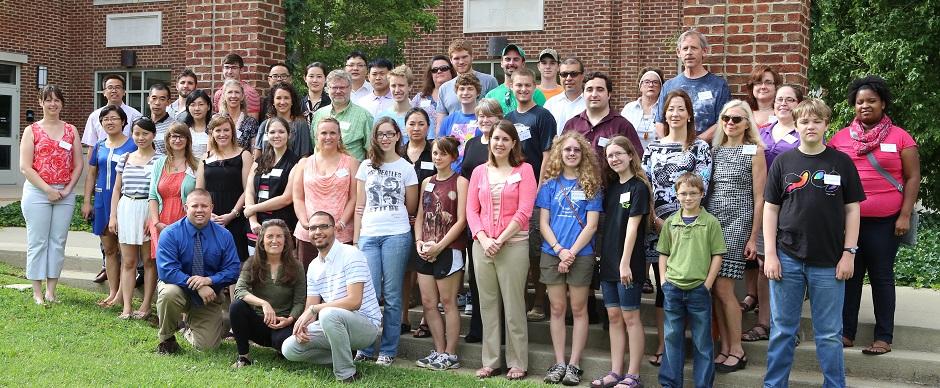Center for Accelerated Language Acquisition
Competencies
CALA courses foster a “whole language” classroom environment wherein students and the instructor constantly communicate with each other in real time. Participants are exposed to grammar naturally in a communicative context rather than “taught grammar points” explicitly. The listing below is intended to provide a general sense of the grammar and competencies treated in our asynchonous online telecourses for American Sign Language (ASL), Mandarin (Chinese), French, Spanish, and Tamil.
American Sign Language (ASL) Telecourse
- Alphabet
- Greetings
- Colors
- Numbers 1-20
- Parts of the Body
- House and home
- Family and relationships
- Everyday vocabulary (e.g., stand, sit, walk, give, take, dances, slowly, quickly, boy, girl, chair, table, thank you, you’re welcome, floor, money, pen, book, apple, shirt, I win, how, what, how many)
- Positive and negative emotional expressions
- Recounting a story using there is, wants, goes to
- Comprehension questions
Chinese (Mandarin) Telecourse
With a primacy on oral communication, the writing system of Chinese Parts 1-2 is NOT covered
- Common vocabulary
- Expressions of positve and negative emotion
- Subject pronouns
- Positive and negative forms of verbs
- Interrogative pronouns and responses to oral questions
- Introduction of adjectives
- Numbers 1-24
- Overview of numerous Chinese cultural practices
- More complex sentence structure
- Comprehension and personal questions
French Telecourse
- Comprehension and production of all parts of speech from various domains of high-frequency vocabulary (e.g., places, parts of the body, the family, the home, the classroom, clothing, colors, numbers 1-20, and transportation)
- Regular verbs: present tense and infinitive form
- Irregular verbs: être, avoir, vouloir, and aller
- Adjective/article agreement
- Direct/indirect object pronouns
- Basic conversational greetings
- Numbers 1 through 1 million
- Comprehension and personal questions
- Positive and negative emotional expressions
- Present and imperfect tenses for regular and irregular verbs
- Spatial and temporal prepositions
- Describing the weather
- Days of the week and the date
- Months of the year and the seasons
- Telling time
- Geography of France and surrounding countries
- Describing oneself
Spanish Telecourse
- Comprehension and production of all parts of speech from various domains of high-frequency vocabulary (e.g., places, parts of the body, the family, the home, the classroom, clothing, colors, numbers 1-20, and transportation)
- Regular verbs: present tense and infinitive form
- Irregular verbs: dar, estar, gustar, haber, ir, ser, and tener
- Adjective/article agreement
- Direct/indirect object pronouns
- Basic conversational greetings
- Numbers 1 through 1 million
- Comprehension and personal questions
- Positive and negative emotional expressions
- Introduction to preterite and imperfect tenses for regular and irregular verbs
- Spatial and temporal prepositions
- Describing the weather
- Days of the week
- Months of the year and the seasons
- Telling time
- Geography of Central America
- Describing oneself
Tamil Telecourse
With a primacy on oral communication, the writing system Tamil Part 1 is NOT covered.
- Common vocabulary
- Expressions of positve and negative emotion
- Subject pronouns
- Positive and negative forms of verbs
- Interrogative pronouns and responses to oral questions
- Introduction of adjectives
- Numbers 1-10
- Cultural practices (e.g., music, dance, food, and poetry) of Tamil Nadu (Southern India)
Contact Us
Center for Accelerated Language Acquisition (CALA)
c/o Shelley Thomas
Middle Tennessee State University
Honors Box 267
Murfreesboro, TN 37132
Shelley Thomas, Ph.D.
CALA Director
shelley.thomas@mtsu.edu
Brian Roberts, M.A.T.
CALA Associate Director
brian.roberts@mtsu.edu


